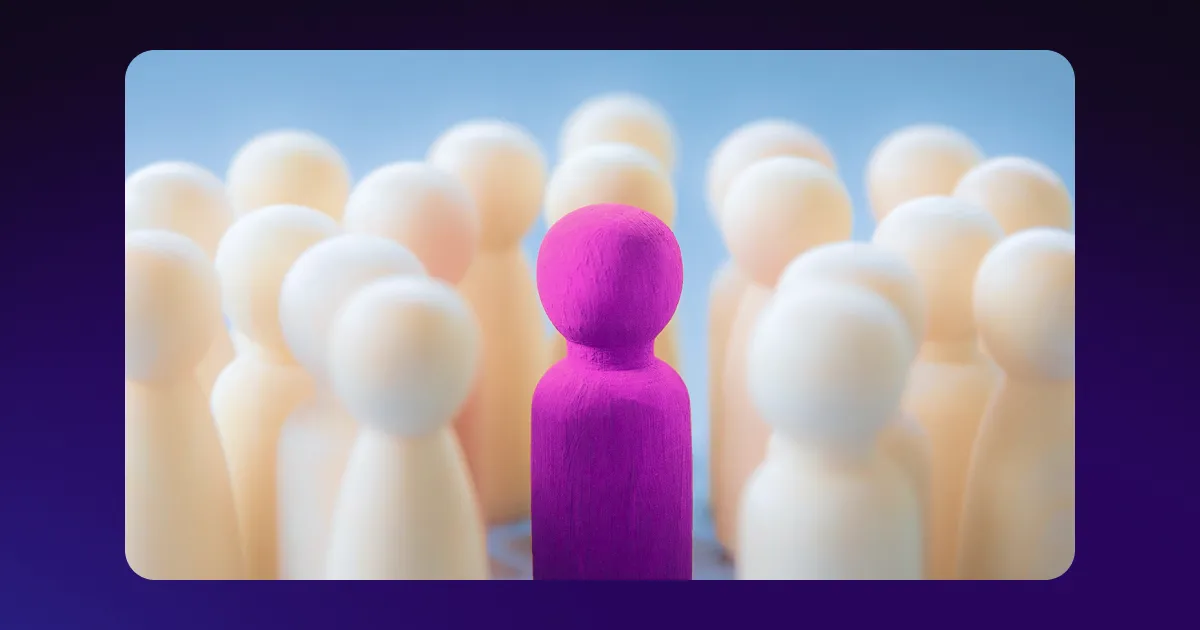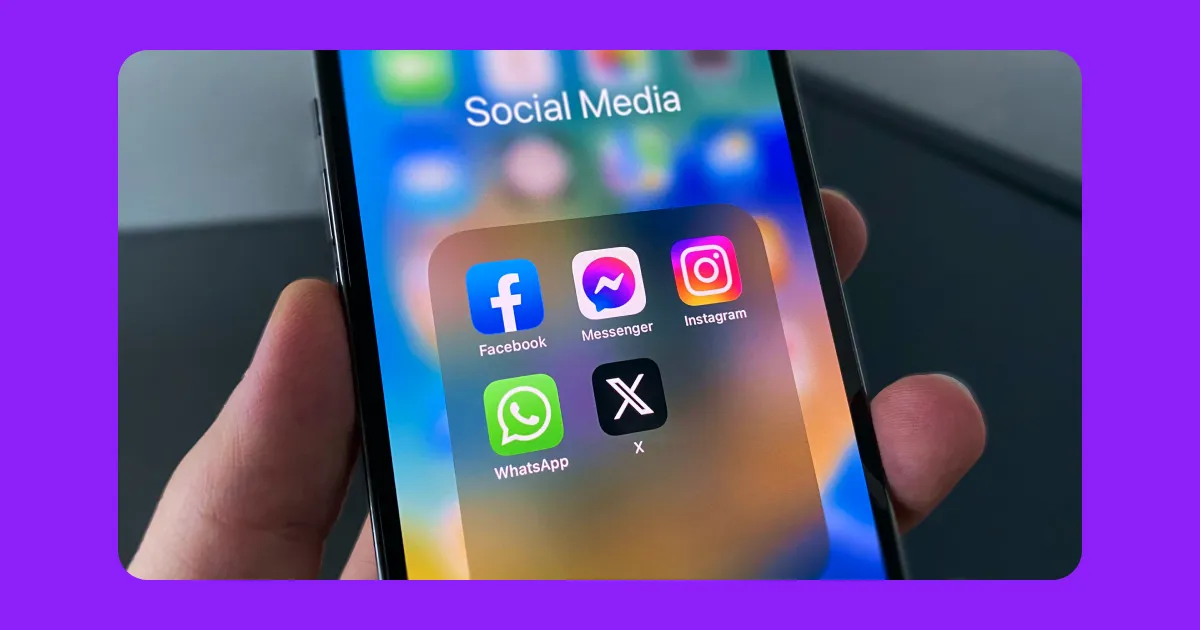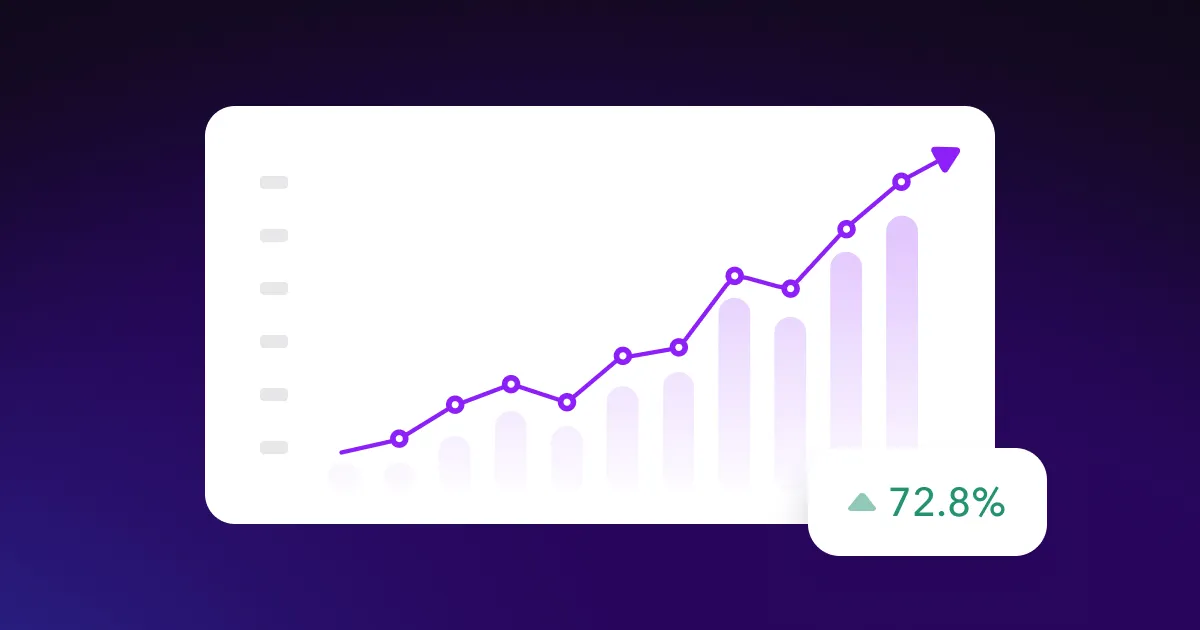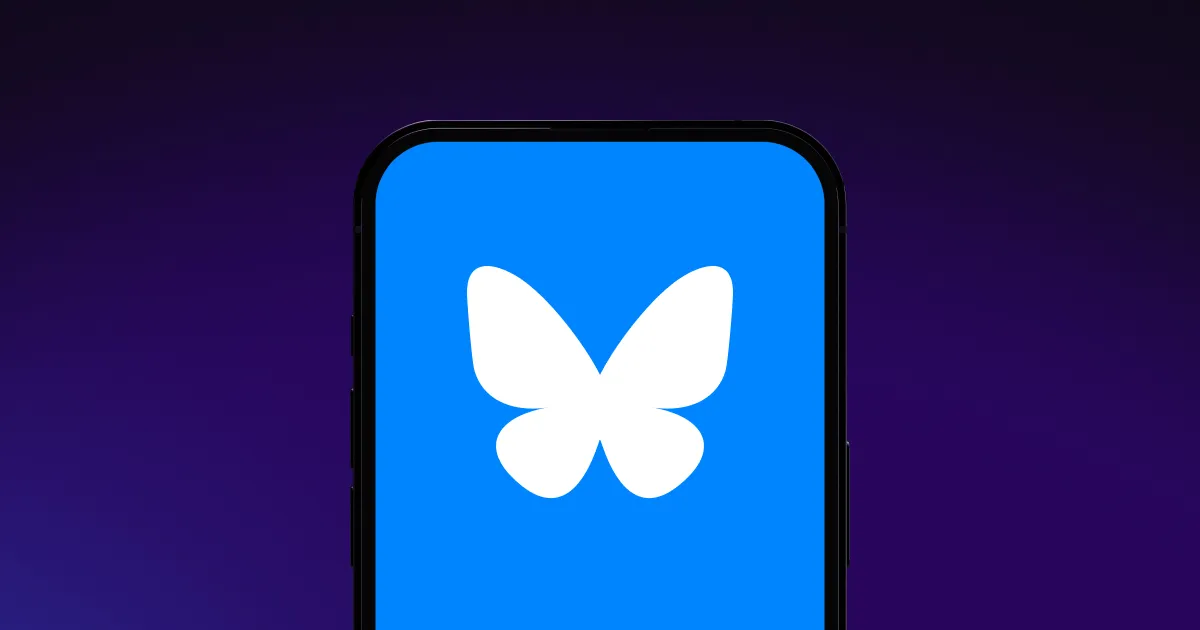If your content isn’t gaining traction, you might be speaking to the wrong group of people. Knowing your target audience helps you create with purpose, reach the right viewers, and grow a brand that sticks.
In this guide, we’ll explain how to identify your target audience and connect with them using Captions.
What’s a Target Audience?
A target audience is the specific group of people most likely to care about what you’re offering. Instead of trying to make content everyone will like, you focus on the people who actually want to hear from you — those whose age, goals, or interests align with your brand.
Because your target market already sees your posts as relevant, they’re more likely to watch your videos through to the end and take meaningful actions, like subscribing or sharing. Knowing who they are helps you tailor posts to them and build a content marketing strategy that drives real results.
Benefits of Defining a Target Audience
Below are the key benefits of defining your audience.
Creates an Engaging Brand Identity
Your brand voice and values should reflect your audience’s preferences to encourage clicks and sales. When you know your ideal viewers, you can build a style that connects with them — fun and fast-paced, calm and informative, or bold and inspiring. This emotional alignment builds trust and keeps your brand top of mind.
Boosts Conversion Rates
Knowing your target audience directs every choice in your strategy because you understand which topics capture their interest, the platforms they actively use, and the formats they engage with most. This clarity means that your content and calls to action (CTAs) speak directly to people ready to take the next step.
Focusing on specific viewers boosts conversion rates because you’re directing your efforts toward genuinely interested viewers, not wasting time on those who don’t care.
Drives Stronger Loyalty
Audiences remain loyal when they feel understood, giving them confidence that your posts will consistently meet their needs. By directly addressing their pain points and questions, you build trust and create an authentic, lasting bond. Remember that loyalty doesn’t happen overnight — it develops steadily through reliable, relevant communication that makes your community feel truly valued.
4 Types of Target Audience Demographics
Here are four audience types you can focus on, based on different characteristics.
1. Purchase Intent
This audience segment actively seeks solutions and is ready to make a decision. They have a clear need and are most likely to take immediate action, like buying items or requesting more info. To reach them effectively, focus on clear calls to action and trust-building content that removes any hesitation.
For example, a short video walking through product benefits, followed by a limited-time offer, can help convert this group quickly.
2. Interests
These shoppers bond over shared hobbies and passions. Because common interests unite them, they’re easier to find and engage through targeted hashtags and niche communities.
To connect with this market, create media that speaks their language and encourages interaction within these spaces. This approach helps build a loyal, involved audience that feels personally connected to your content.
For instance, a cycling brand might use hashtags like #BikeLife and join cycling forums to share tips, gear reviews, and community stories that spark conversations.
3. Demographic and Geographic Audiences
Traits like age, gender, or education level define demographic groups. Geographic segmentation divides audiences by location, whether that’s a city, region, or country.
These varied markets help you customize your content based on who people are and where they live. Understanding this helps you tailor uploads to local interests, cultural events, and seasonal trends.
For instance, a creator targeting Spanish-speaking markets can translate audio and captions into Spanish and use viewer location data to follow local trends.
4. Psychographics
This audience type focuses on mindset, specifically values, lifestyles, and beliefs. Instead of targeting surface-level traits, you’re tapping into what motivates people. Your ideal market might prioritize sustainability or crave personal growth. These deeper insights help you produce material that feels personal and purposeful.
To reach new audiences in this category, start by identifying which values your posts naturally align with. Then, meet people where they already spend time, like niche forums and interest-based communities on social platforms. Use analytics tools to see what content resonates, and refine your messaging as you learn what connects most.
Imagine a soap company is looking to reach sustainably minded shoppers. They could make a video outlining their ingredient lists and upload it on cleaning-focused Pinterest boards and subreddits.
Target Audience Examples
Let’s examine real-world examples of target audiences and how to reach them.
New Parents
- Buyer persona — Taylor, 31, is adjusting to life with a newborn. She’s looking for parenting tips and authentic, relatable content on Instagram and TikTok.
- Habits — Engages most with real-life, unfiltered stories
- Interests — Baby care, sleep routines, affordable gear
- How to reach Taylor — Create approachable Reels featuring text overlays and soft background music. Focus on sharing practical hacks and honest experiences that resonate with new parents. Use hashtags like #NewMomLife, #BabySleepTips, and #AffordableBabyGear to reach her where she’s already spending time.
Tech Enthusiasts
- Buyer persona — Jamie, 28, is always up to date on the latest gadgets. He hangs out on Reddit, YouTube, and X (formerly Twitter).
- Habits — Watches deep-dive reviews, product demos, and comparisons
- Interests — AI, hardware, mobile apps
- How to reach Jamie — Post demo videos and first-look reviews with SEO-friendly titles, like “Top 5 AI-Powered Mobile Apps You Should Be Using.” Tag relevant products so your content appears where he’s already browsing.
6 Steps To Finding Your Target Audience

Follow these six steps to find and connect with the right people.
1. Define Your Goals
Start by clarifying what you want from your content. Consider whether you’re trying to build a community, drive sales, or land brand deals. Your goals will shape the kind of content you create.
2. Analyze Your Current Audience
If you’ve posted before, review your analytics across platforms. Look at demographics like age, watch time, and top-performing posts to see who’s engaging and what interests them. These insights help you align your goals with the right audience.
3. Use Social Listening Tools
The more you know about your ideal audience, the easier it is to reach them with the right ads. Start by using free tools like Google Trends and social media analytics to learn about their demographics, interests, and where they hang out online. Use social listening tactics to see how people talk about your niche.
4. Research Competitors
Check out what competitors are doing by searching relevant hashtags or exploring recommended accounts on platforms. Who’s following them? What’s working in their content? You don’t need to copy their strategy exactly, but use it to get a sense of who you can reach.
5. Build Audience Personas
Audience personas are fictional profiles representing the broader group of people who consume your content. They include anyone interested in your messaging, whether or not they’ve made a purchase.
These personas help you understand who your viewers are, what they care about, and how they interact with your content. By creating detailed profiles, you can tailor your marketing campaigns to attract specific consumers.
6. Test and Refine Your Messaging
Begin creating with those personas in mind. Audience targeting is ongoing, so track which content performs best and adjust your approach accordingly.
Develop Content That Speaks To Your Audience With Captions
Once you know your market, you’re not guessing what to post — you’re creating with purpose. Every caption, cut, and clip is shaped around what your audience wants to see.
To make this process easier, try Captions’ AI Video Generator. It helps you craft expressive, realistic videos with custom B-roll and music. Just upload your clip, let AI handle the edits, and download your final video to share across any social media platform.
Use Captions to create content your audience will love.









